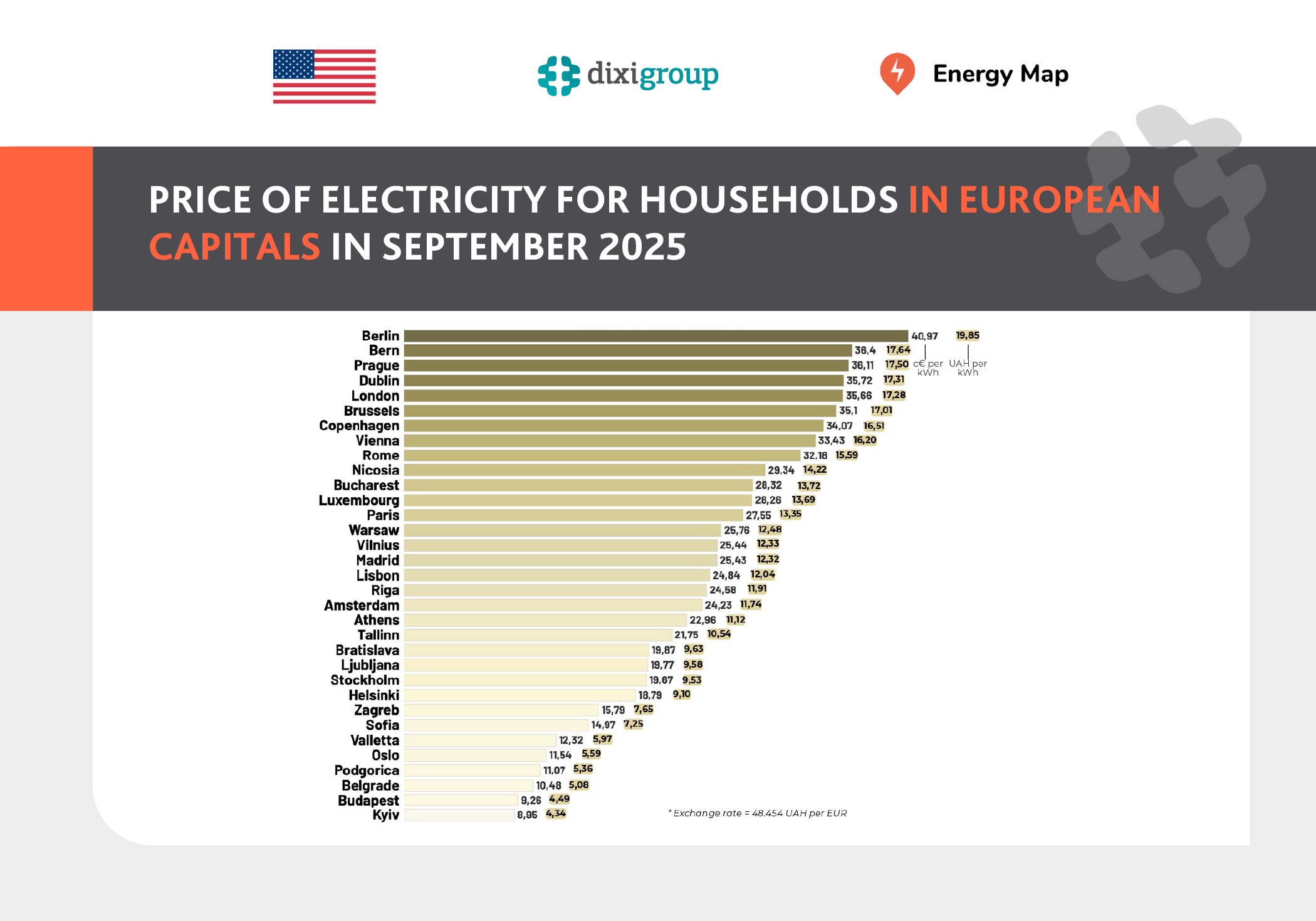According to Energy Map, in October 2025, Ukraine imported 353.9 GWh of electricity, 2.5 times more than in September. This marks the highest monthly import volume since the beginning of the year. At the same time, exports decreased sevenfold to 90.8 GWh, marking the first decline in five months.

The sharp increase in imports is caused by the worsening situation in the energy system due to massive attacks on Ukraine’s energy infrastructure. During October, russian attacks damaged, among other targets, thermal and hydropower generation facilities, leading to a capacity shortage. As a result, emergency and scheduled hourly power outages for households were reintroduced, along with power limitation schedules for industry and businesses.
The situation was worsened by lower temperatures and the delayed start of centralized heating: as of October 30, only 62% of social infrastructure and residential buildings were connected to the heating system. Low output from household solar power plants due to cloudy weather, along with the active use of electric heaters before the start of the heating season, created additional strain on the power system.
Imports
Electricity imports in October fluctuated due to russian shelling. After the massive strike on October 10, external supply volumes sharply increased – by October 11, imports reached 19.0 GWh (+141.5% compared to the previous day). A similar situation occurred after the October 22 attack: during October 23-24, imports sharply rose to 19.8 GWh and 23.4 GWh, respectively (+64.8% and +94.4% compared to October 22). At the end of the month, following another large-scale attack on October 30, Ukraine again increased external purchases – on October 31, imports reached 22.4 GWh (+76.9% compared to the previous day).
Structure of electricity imports by direction of supply:
- Hungary – 180.0 GWh (50.9%);
- Poland – 80.2 GWh (22.7%);
- Romania – 76.9 GWh (21.7%);
- Moldova – 9.2 GWh (2.6%);
- Slovakia – 7.6 GWh (2.1%).
Compared to September 2025 (139.7 GWh), imports grew 2.5 times, and compared to October 2024 (181.8 GWh), 1.9 times.
Import capacity utilization
The maximum approved commercial import capacity from the EU has remained at 2.1 GW (equivalent to two large nuclear power units) since December 2024. In October 2025, the average utilization rate was 22.6%, with a peak on October 18 at 8:00-9:00 p.m. (84.4%) and the only hour of the month when no electricity was imported (October 3 at 10:00-11:00 p.m.).

In addition to the commercial capacity, 0.25 GW of emergency assistance from neighboring ENTSO-E operators is available as backup in critical situations. In October, emergency assistance was activated through imports from Poland, totaling 28.8 GWh, and exports of surplus electricity to Poland amounting to 5.25 GWh. No public information is available regarding other neighboring power systems.
Exports
Electricity exports in October fell to 90.8 GWh, which is seven times less than in September (635.1 GWh). Most exports occurred during hours of minimal domestic demand – mainly at night and early morning (00:00-06:00 a.m.).
Structure of electricity exports by direction:
- Hungary – 39.3 GWh (43.2%);
- Moldova – 31.1 GWh (34.3%);
- Romania – 14.9 GWh (16.4%);
- Poland – 3.6 GWh (4.0%);
- Slovakia – 1.9 GWh (2.1%).
As a result, imports exceeded exports nearly fourfold – the negative balance in October amounted to -263.0 GWh. Over the first ten months of 2025, Ukraine is a net electricity importer, with a negative balance of -168.7 GWh for this period.
The material is made possible by the support of the American people as part of the Energy Sector Transparency Project implemented by DIXI GROUP. The information contained in this material is the sole responsibility of DIXI GROUP and can under no circumstances be taken to reflect the position of the U.S. Government.






